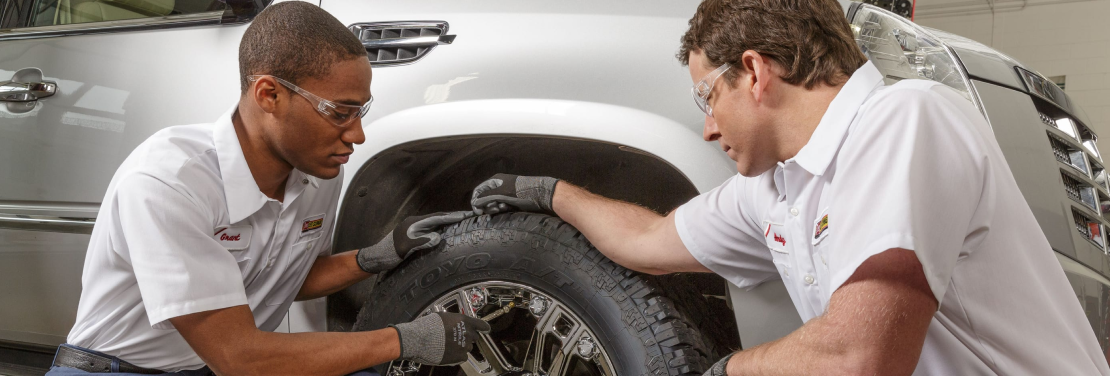Morris Tire and Alignment: Your Relied On Resource for Reliable Service
Morris Tire and Alignment: Your Relied On Resource for Reliable Service
Blog Article
Tire Solution: Recognizing Tire Stress Tracking Systems
Comprehending Tire Stress Tracking Solutions (TPMS) is a critical facet of preserving optimum lorry performance and safety and security on the road. With improvements in automotive technology, TPMS has actually become a typical feature in modern-day automobiles, offering real-time details on tire stress levels.

Significance of TPMS
The relevance of Tire Stress Monitoring Systems (TPMS) depends on their capacity to boost vehicle security and performance via real-time surveillance of tire pressure degrees. Maintaining the proper tire pressure is essential for guaranteeing ideal handling, stopping, and overall safety of a vehicle. TPMS gives motorists with instant feedback on any overinflated or underinflated tires, enabling prompt modifications to be made.
Elements of TPMS
Comprising different essential aspects, a Tire Stress Tracking System (TPMS) functions as an advanced safety function in modern cars. The primary elements of a TPMS include sensing units, a control module, and a warning indication. Sensors are typically located in the tire shutoff stem or connected to the wheel assembly, where they determine tire stress and transfer data to the control component. If it finds dramatically low pressure in any of the tires, the control component procedures this info and activates a warning. The warning indication, usually a symbol on the dashboard, informs the vehicle driver to examine the afflicted tire or tires. Some progressed TPMS versions additionally present the real tire stress analyses for every tire, supplying motorists with real-time details to make certain optimum tire performance and safety. By keeping track of tire pressure continuously, TPMS helps avoid mishaps, lowers tire wear, and improves fuel effectiveness, making it an important part for car safety and efficiency.
Kinds Of TPMS

On the other hand, indirect TPMS counts on the automobile's wheel rate sensors to keep track of tire pressure. This system detects underinflation by comparing the rotational rates of the wheels. Indirect TPMS is less pricey than direct TPMS, as it uses existing sensing units within the lorry.
While direct TPMS uses much more exact readings, indirect TPMS is easier in why not find out more design and typically requires less maintenance. Both systems have their advantages and limitations, and the choice between them typically relies on variables such as price, car make, and individual preference. Understanding the distinctions between these 2 kinds of TPMS can aid automobile owners make educated decisions relating to tire upkeep and security.
TPMS Upkeep Tips
Effective maintenance of TPMS is essential for guaranteeing optimal performance and safety and security of your lorry. Routinely examining the TPMS sensors for any type of damages or deterioration is essential. Make sure that the sensing units are clean and cost-free from particles that might disrupt their functioning. Additionally, it is advisable to check the sensing unit batteries occasionally and change them as required to assure accurate analyses. Conduct regular look at the tire stress degrees and compare them with the TPMS analyses to guarantee they correspond. Recalibrate the system adhering to the maker's guidelines if there are any kind of disparities. During tire turning or replacement, make certain that the TPMS parts are taken care of meticulously to protect against any kind of possible damages. Lastly, if the TPMS warning light illuminates on the dashboard, deal with the issue promptly by inspecting the tire pressures and the total system for any type of mistakes. By adhering to helpful hints these upkeep pointers, you can prolong the lifespan of your TPMS and improve the security of your driving experience.
Benefits of Proper Tire Pressure
Keeping correct tire stress, as stressed in TPMS Upkeep Tips, is critical for gaining the countless benefits associated with optimum tire pressure levels. Additionally, correct tire stress ensures even tire wear, extending the life-span of the tires and advertising safer driving conditions. In final thought, the advantages of proper tire stress go beyond just tire long life; they encompass boosted fuel performance, boosted safety, much better automobile efficiency, and overall driving convenience.
Verdict
Finally, recognizing tire pressure monitoring systems (TPMS) is important for maintaining optimum tire stress and making sure automobile security. By identifying the significance of TPMS, being acquainted with its parts, knowing the different types offered, sticking to correct upkeep pointers, and understanding the advantages of maintaining proper tire pressure, vehicle drivers can enhance their driving experience and extend the life-span of their tires. Appropriate tire pressure is crucial to secure and effective car operation.

Report this page